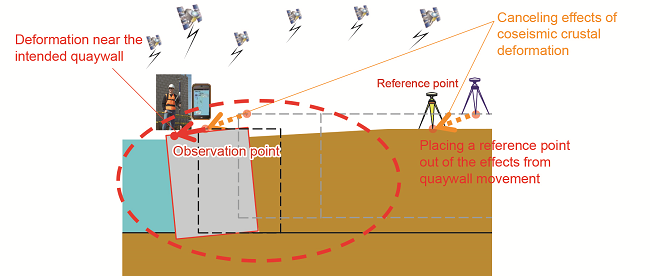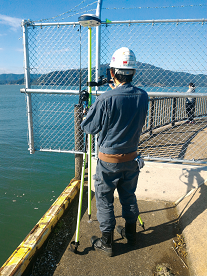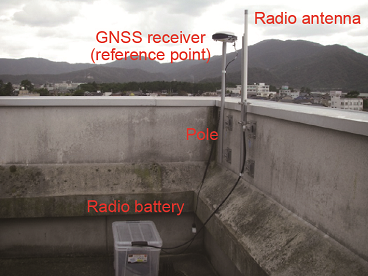Major Research 1A Research on Mitigation and Restoration of Earthquake Disasters
Background and Objectives
To counter large-scale disasters including Nankai megathrust earthquakes and earthquakes in the greater Tokyo area, the following countermeasures are required: securing necessary trunk line cargo transportation soon after an earthquake and quickly securing the requisite minimum transportation of key emergency supplies for recovery and reconstruction hubs. In addition, the interaction of earthquakes, tsunamis, and high waves with the ground might cause coastal disasters, so it is necessary to reduce such risks.
Therefore, the themes of this research cover research and development which simultaneously achieves the two goals of improving earthquake resistance and reducing construction costs. These two goals can be achieved through diagnosis and performance verification of earthquake-resistance of facilities which address the properties of long-period and long-duration earthquake ground motion, which is expected to occur during a subduction-zone megathrust earthquake, as well as the properties of earthquake ground motion caused by local ground characteristics. Research and development are being conducted mainly on methods for investigating and diagnosing earthquake resistance as well as construction methods that improve the resistance, while using existing facilities with limited design life that were erected during the era of rapid economic growth.
Research topics
Research and development comprises the following three subthemes:
1.Research on strong ground motions and damage predictions in the case of the greatest earthquakes
Subduction-zone megathrust earthquakes may cause the greatest and long-duration earthquake motions, so we will develop techniques for predicting such motions. Also, we will develop techniques for predicting liquefaction and structural damage caused by such motions.
2.Research on damage-reduction techniques against the greatest earthquakes
We will suggest the most effective countermeasures under given limitations to effectively promote seismic strengthening of existing structures. In doing so, we will actively utilize damage reduction and strengthening techniques that use novel materials, structures, and construction methods. Especially, as earthquake-resistance countermeasures for industrial complexes, we will consider maintaining the functions while reducing costs for overall plants, and then develop investigation, diagnosis and countermeasure techniques which minimize usage limitations of plants. In addition, we will develop testing methods to rapidly evaluate damage levels on site immediately after a disaster as well as emergency restoration techniques.
3.Research on the interaction of earthquakes, tsunamis, and high waves with ground dynamics
We will proceed with research on the following interaction of earthquakes and ocean waves with the ground: stability evaluation against seabed liquefaction, washout, cavity formation and collapse under earthquakes or under ocean waves; a mechanism on how a breakwater foundation loses its bearing capacity in the presence of tsunami; and other interactions. Also, we will use numerical simulation models, model experiments (on a centrifuge and a large-scale fluid tank), and other methods to investigate earthquake-induced submarine landslide development, the resulting tsunami phenomena, ground dynamics under the influence of tsunami and high waves, and the analysis of deformation and instability/destruction mechanisms as well as their countermeasures.
Activities in FY 2017
We obtained 2864 strong motion earthquake records during the period between January to December 2015. We will organize and analyze these records and will then publish the data as a Technical Note of the Port and Airport Research Institute.
In collaboration with related organizations including the Ports and Harbours Bureau of the Ministry of Land, Infrastructure, Transport and Tourism, we investigated the on-site introduction of a quaywall deformation measurement tool utilizing RTK-GNSS, which is a technique to assess the post-earthquake damage conditions of port facilities and to determine whether such facilities can be used.
To develop a technique to estimate strong ground motions to prepare against large-scale earthquakes occurring directly beneath metropolitan areas, we analyzed data from several intraslab earthquakes with different characteristics and then developed and verified source models to explain those ground motions.
We conducted a study on the evaluation and analysis of liquefied ground behaviour targeting the sequenced earthquake motions and grounds involving fine contents, and elucidated the mechanism of the internal flow characteristics in association with the progress and propagation of liquefied zones.
To develop diagnostic and countermeasure techniques to improve the disaster-prevention characteristics of industrial complexes, we focused on actual coastal industrial complex facilities and confirmed the earthquake-resistance effects of the countermeasure by the model experiment using the National Research Institute for Earth Science and Disaster Resilience's large shake table (E-Defense) and conducted numerical analyses to re-create the behavior of these facilities.
We developed a numerical model for steel-pipe members to adequately represent their seismic performance and then proposed a new earthquake-resistant design method, with modified performance specifications applicable for piled piers, steel pipe sheet pile quay walls, and anchorages of sheet pile quay walls.
We took both breakwater mound/ground dynamics against tsunamis and countermeasure construction against them (reinforcing embankment) into account, and then proposed the method evaluating the stability of breakwaters.
We conducted centrifugal model experiments to study the ground stability against waves and found that inter-ground stress and water pressure affect ground stability. Also, we investigated how to reproduce wave breaking in narrow vessels, in which there is not enough distance to achieve wave shoaling, and compared the results of centrifugal model experiments with fluid numerical analyses.



A tool to measure quaywall deformation using RTK-GNSS and trial measurement at Tsuruga Port



